What is 4D and difference between 3D and 4D?


As we know, scientists are interested to study space to explore more knowledge and information about this universe. The increase in knowledge of space proves very helpful for them to understand the dimensions of an object.
We are familiar with 2D (Two Dimensional) and 3D (Three Dimensional) technologies. To perceive the world from different angles, 2D and 3D technologies were introduced but now the latest 4D technology is being introduced to imagine the world.
The concept of the flat universe is described in 2 dimensions but in reality, everything around us reflects in 3 dimensions keeping in view its length, width, and height. When we move towards the 4 dimensions, the time dimension is added in 3D objects as an extra feature.
What is 4D?
4D (Four-Dimensional) concept refers to the Einstein “General Relatively Theory”. According to Einstein, the universe is composed of time and space. 4D is a branch of graphics that is an extended form of 3D. The concept of 3D is very simple to understand.
Three dimensional has three different sides of an image that may be considered as its height, width, and depth. Whereas 4D has the same features as 3D but is one step higher than 3D technology. Four-dimensional (4D) has an extra dimension, i.e., time dimension.


The concept of this time dimension was introduced in the mid-1700s and was published in 1754. It’s a space-time concept.
The space is represented by coordinates in three-dimensional systems. In that systems, the time dimension is not displayed which is an additional feature of four-dimensional systems. We can present the 3D systems in 4D but it is not possible to visualize the 4D systems in 3D due to their incompatibility.
In both systems, three variables i.e. height, width, and depth are constant or real. However, time is the dimension that differentiates 4D with 3D systems.
What is 3D?
With three dimensions (3D), we can perceive that things are beyond the eyes. In other words, 3D technology shows three different angles of an image that are not possible to see with the human eyes, in real-time.
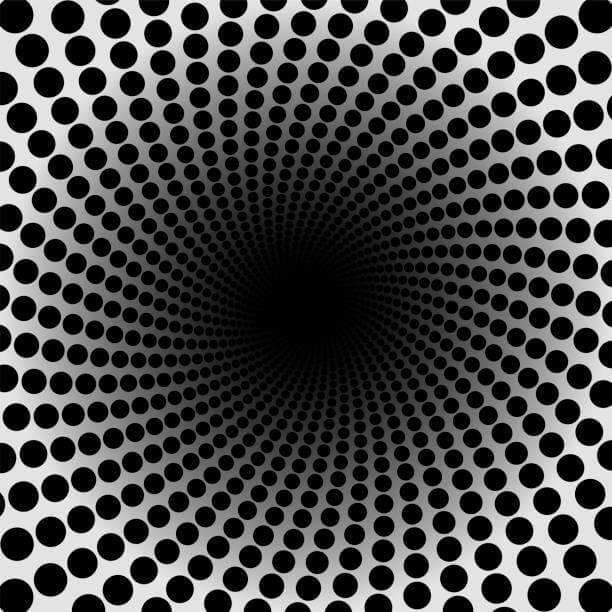

Normally, human eyes are not capable to see 3D objects, for this purpose, special gadgets are available which make it possible to observe the world in virtual reality. Three dimensions (3D) are mostly used in gaming, movies, and graphics. To examine the existence of fourth-dimensional is also very problematic because we cannot observe 4D objects normally with our eyes.
Example to understand the concept of 2D, 3D, and 4D
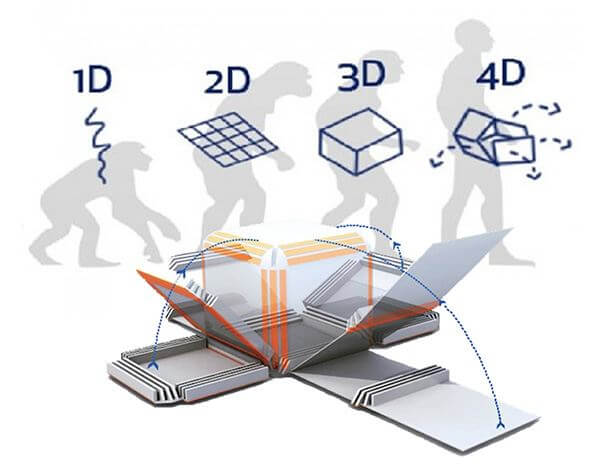

Let us understand the concept of 2D, 3D, and 4D. If we say that in 2D, space reality is square then the square is a flat surface and can move only left and right or forward and back.
But if we consider the space reality is 3D, then the square can also move up and down and resemble the cube.
And in 4D, it will be a four-dimensional cube or shadow like a tesseract.
Major difference between 2D, 3D, and 4D
The major difference between 3D and 4D is pointed out as under:
| Parameters | 2D | 3D | 4D |
| Structure | Two Dimensional – Consisting only length and width | Three Dimensional -Its parameters include length, width, and height or depth variable. | Four Dimensional – Its parameters would be the length, width, depth, and time variable. |
| Properties | Simple, one-point perspective projection | It is a Virtual Reality. | It is an Abstract idea |
| Mathematical representation | Only two variables | Three variables objects representation | Four variables, vector representation |
| Movies | Normal display | Provides visual effects | Provides visual effects in addition to real-life experience |
| Examples | Square, Circle, rectangle | Cylinders, prisms, cubes, pyramids | Tesseract- Due to its 4-polytopes, its applications are very complex. |
Applications of 3D and 4D
All the applications which have 3D capability must also have 4D structures with its additional time feature. Nowadays, the use of 4D technology is reflected in many different fields such as entertainment, medical, industries, etc.
3D Movies
In Entertainment, the concept of 3D movies was introduced in 1922. 3D movies are motion pictures with depth features and can be envisaged by using special glasses.
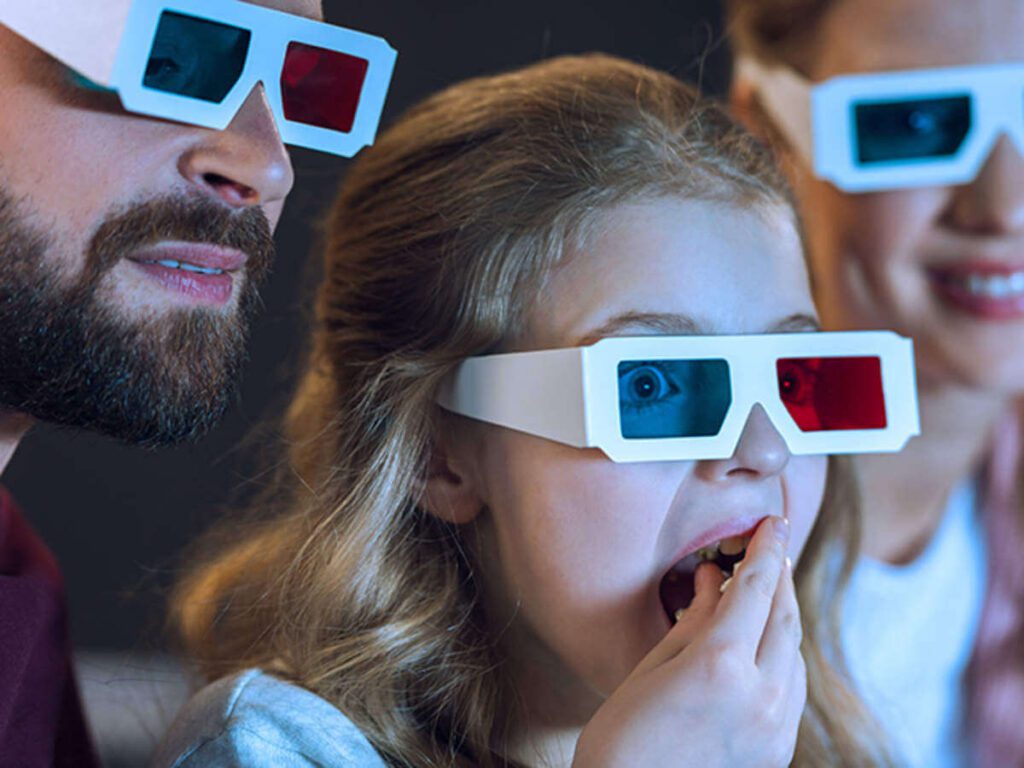

There are different types of 3D glasses to interpret the images which are categorized as follows:
· Anaglyph glasses
These glasses use special lenses (Red/Cyan, Magenta/Green, Red/Green, Red/Cyan) to understand the image. The use of anaglyph glasses has been reduced due to other inventions having extraordinary features.
· Polarized filter glasses
It is largely being used in cinemas. The working of the Polarized filter glasses is the same as anaglyph glasses but the difference is that it uses the polarized light system instead of anaglyph processing.
· Shutter glasses
These are the latest innovation in 3D glasses. These glasses are battery-powered and work with LCD screen technology instead of filters or colors to create a 3D effect.
3D/4D Ultrasound
In the medical field, 3D technology is being used for ultrasound purposes. 3D ultrasound collects multiple 2D images from different angles and then assembles them to make a three-dimensional image.
4D ultrasound is also similar to 3D ultrasound but in this technique, motion images are shown like video. So in this technology, we can see the fetus doing things in real-time.
Therefore, we can summarize that 3D and 4D ultrasound provides in-depth detail and information than 2D ultrasound.
3D / 4D Printing
To print a file in 3D, it is necessary to convert it into a digital model by using Computer-Aided Design (CAD). The computer-aided design is imported into 3D printing software where is sliced into layers to make it readable by the 3D printer. 3D objects can be printed over any surface like plastic, resin, and even metal.
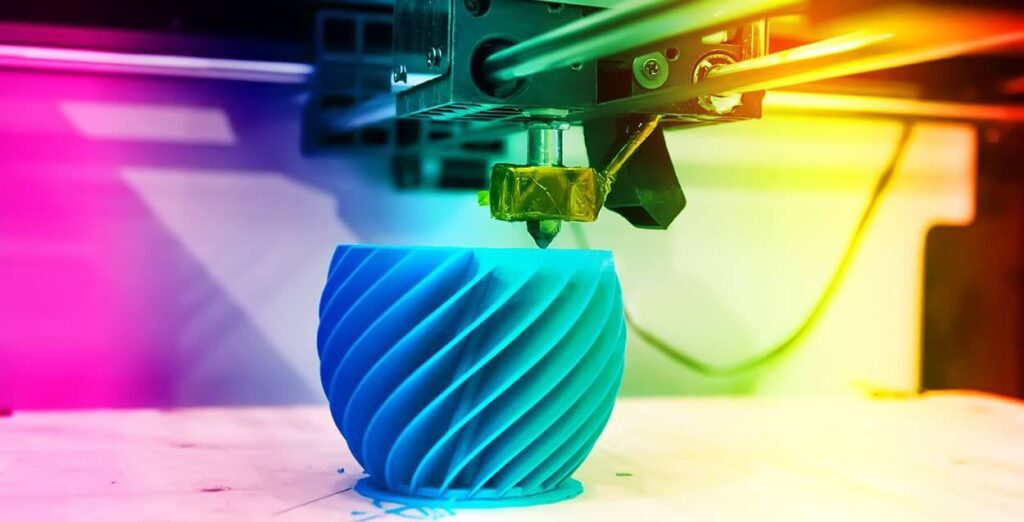

4D printing is also known as 4D bio-printing. The process of 4D printing is the same as 3D printing. However, in 4D printing, the 3D object gradually changes itself into different forms according to environmental stimulus. In 4D printing, the time-dependent object changes its shape after printing. Self-assembled, smart materials are used for 4D printing.
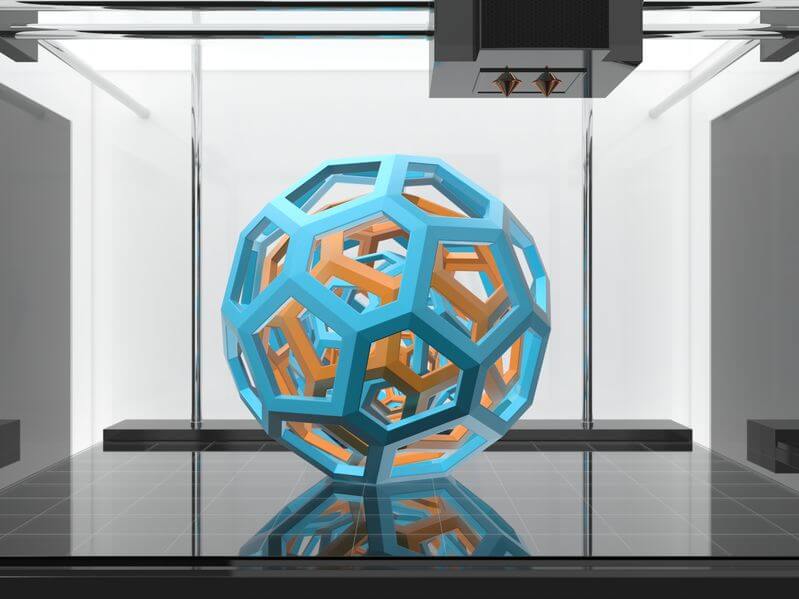

3D and 4D printing are also used in Prosthesis, education, construction, and industries.




